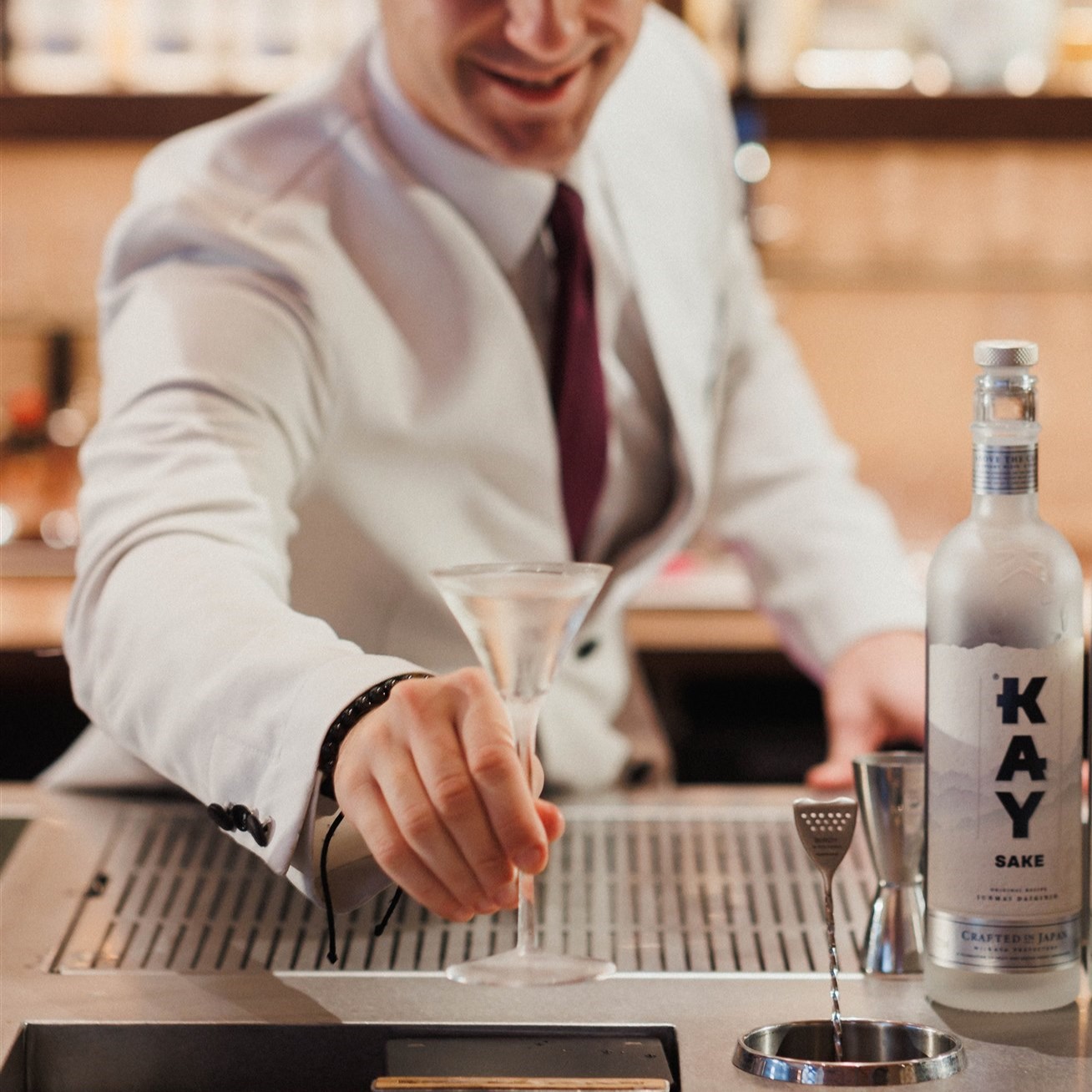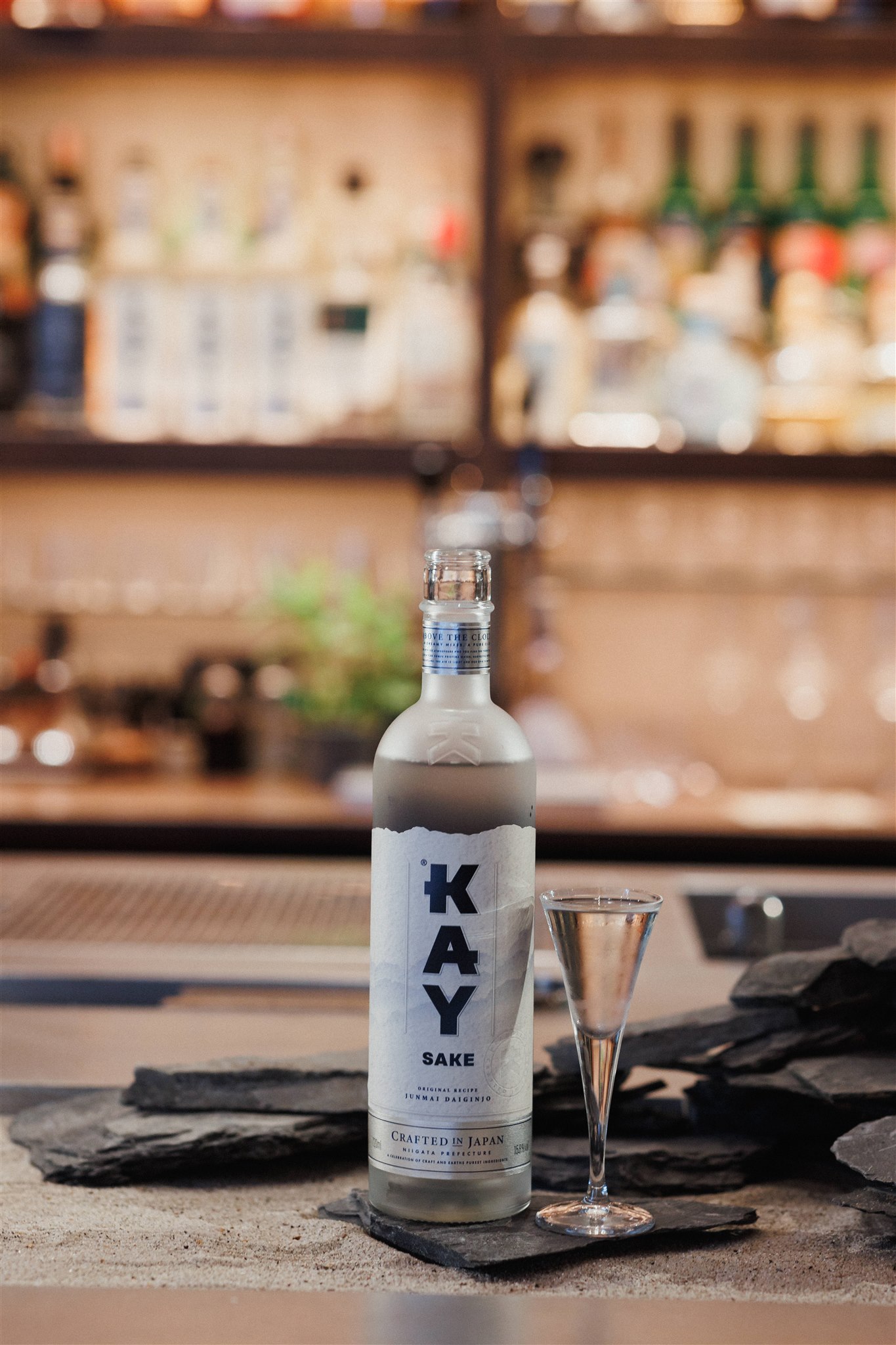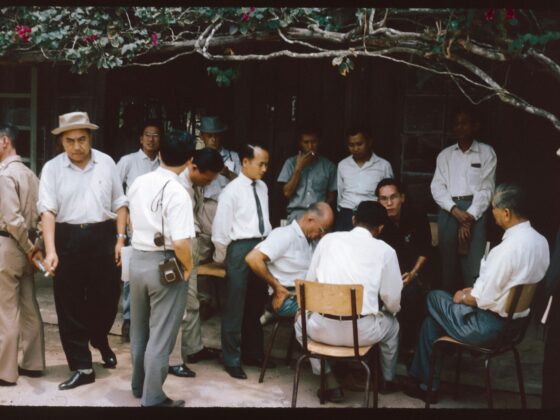Francesco Braun is a renowned expert in spirits and cocktail culture, specialising in Japanese liquors like Shochu and Awamori. In this interview, Francesco discusses his collaboration with KAY Sake, exploring the brand’s commitment to redefining sake for a global audience. He highlights KAY Sake’s versatility, its appeal in the luxury bar scene, and the growing demand for lower-alcohol, gluten-free options.
Francesco also shares his approach to incorporating spirits like KAY Sake into cocktail menus and the key to creating memorable drinking experiences. His passion for blending tradition with modernity has made him a key advocate for KAY Sake’s innovation in the industry.
First of all when I look at collaborating with a brand it is never just one reason, but it is a combination of factors that influence my choice. The quality of the liquid of course is the main driver, but that’s never enough. You need to see at the mission of the brand, its goals, its core values and above all the bigger picture, which is what many brands often lack. KAY Sake has it all and it aims at promoting the whole category, contributing in pushing sake on stage and make it accessible to everyone, from cocktails to aperitivo moment, destigmatising the idea that sake is just for food pairing and limited to Japanese bars and restaurants. It’s a challenging project in which I see a lot of potential.
KAY Sake is redefining the traditional Japanese drink for a global audience. How do you see this modern approach influencing the way consumers experience sake, especially in the luxury bar scene?
I think that the sake category needs this kind of approach if it wants to impose itself amongst the big ones. Traditions are important and never to be forgotten, however we live in fast paced times and brands have to adapt quickly or they risk to disappear. People are always in search of something new and exciting, and sake has the chance now to shine and give the people what they are looking for.
You specialize in Japanese spirits like Shochu and Awamori. In your opinion, what sets KAY Sake apart from other premium sake brands in terms of flavour and versatility?
KAY sake is designed to stand out in cocktails and although it belongs to the Junmai Daiginjo type of sake which tends to be more aromatic, KAY Sake also has a unique richness that works well with other ingredients without compromising its own personality. It works well mostly with white spirits as well as a base for low ABV drinks, which are an important feature in every bar nowadays.
The bottle design of KAY Sake is as sophisticated as the drink itself. How important do you think packaging and design are in communicating the quality and heritage of a luxury product like KAY Sake?
First impression does matter. In times where thousands of brands compete every day to be in bars and shops, you need to make sure your product stands out in style, capturing the eye of the consumers while encapsulating the essence of the brand. KAY Sake’s bottle design, which was created by renowned Dutch designer Marcel Wanders, captures the essence of KAY Sake’s heritage which originates from Niigata Japan, whilst also demystifying the beverage with a contemporary design that is globally understood.

Given KAY Sake’s position as a lower-alcohol, gluten-free, and additive-free option, do you see it attracting a new, more health-conscious audience? How do you think the contemporary drinker is evolving?
As trends change, the flavours and interests change too – the world is evolving towards a healthier lifestyle and the demand for low ABV is rising. People are drinking less but better, tackling that slice of the market must be part of every brand strategy. KAY Sake presents this choice to mindful drinkers by offering a delicate and complex alternative to spirits. Consumers have the option of an aperitif that is gluten-free, lower in alcohol and free of sulphites and additives. With its three signature serves, KAY on the rocks, KAY Japanese Spritz and KAY Japanese Martini, there is one for each taste.
As a professional who has worked with both high-end bars and luxury brands, what is your process for incorporating a spirit like KAY Sake into a cocktail menu, and what kinds of serves do you recommend for first-time drinkers?
Sake may be tricky to work with if you’ve never worked with it before or if you’ve never had training on the category. Not all sakes perform equally and not every sake is suited for cocktails. I like to play with sake as a base first to see its strength and weakness, from there I add spirits to see how they interact. Sake is more delicate than other ingredients and often has subtle tropical notes as well as melon, apple and pears. The best way of making it shine is to bring up those notes. But for first time drinkers I think cold sake it’s a good starting point, otherwise in a spritz, with soda and a dash of Prosecco.
 You’ve hosted a number of events for KAY Sake, including during London Cocktail Week. What kind of reception have you seen from guests trying KAY Sake for the first time, and what do you think is the key to creating a memorable experience with this drink?
You’ve hosted a number of events for KAY Sake, including during London Cocktail Week. What kind of reception have you seen from guests trying KAY Sake for the first time, and what do you think is the key to creating a memorable experience with this drink?
I was pleasantly surprised that KAY Sake was very well received. It’s a great liquid but obviously it’s a hard category to push and despite having more than 2000 years of history, it’s fairly recent in western countries. People like the fact that it’s accessible, not too aggressive, and it’s a great way of entering the sake world. And if you make people feel like they pioneering a new movement, being part of something unique and special, they will be the first ambassadors of your brand.
As KAY Sake aims to blend Eastern tradition with Western style, how do you personally approach the fusion of cultures in the hospitality and drinks industry, and what future trends do you foresee in global drinking culture?
Fusion is key to every cocktail nowadays. There was a time where Mexican cocktails were only made with all Mexican ingredients, however, that has now passed and the same is slowly happening with Japanese inspired drinks. We have access to so many flavours nowadays and we have to be able to combine them all together. Also, by mixing unknown ingredients with familiar ones, it helps consumers try new flavours. Keeping drinks easy to understand is important if you want your guests to feel at ease when reading your menu, and many bars are shifting again towards that direction. KAY Sake is already leading this movement with its contemporary bottle design and simple signature serves, you can also find KAY Sake cocktails at some of London’s top cocktail bars, including Kwãnt Mayfair, Tayēr + Elementary, Archive & Myth and Nine Lives, to name a few.






